Speaker
Description
The pollen grains of invasive Ambrosia species contain very potent allergens and can be transported vast distances when conditions are favourable. In this study we present the first airborne Ambrosia pollen measurements recorded by an automatic sampler with 1-hour and sub-hourly resolution (i.e. 1-minute and 1-second data).
The data were collected by traditional Hirst-type methods and a state-of-the-art Rapid-E real-time bioaerosol detector. Airborne pollen data, for Total Pollen and Ambrosia, were collected during the 2019 pollen season in Novi Sad, Serbia. Pollen data with daily, hourly and sub-hourly temporal resolution were analysed in terms of their temporal variability. The impact of turbulence kinetic energy (TKE) on pollen cloud homogeneity was investigated.
Variations in Seasonal Pollen Integrals produced by Hirst and Rapid-E show that scaling factors are required to make data comparable. Daily average and hourly measurements of atmospheric Ambrosia pollen recorded by the Rapid-E and Hirst were highly correlated and so examining Rapid-E measurements with the sub-hourly resolution is assumed meaningful from the perspective of identification accuracy. Sub-hourly data provided an insight into the heterogeneous nature of pollen in the air, with short peaks lasting max. 11 minutes, and mostly single pollen grains recorded per second. Short-term variations in 1-minute pollen concentrations could not be wholly explained by TKE.
The new generation of automatic devices has the potential to increase our understanding of the distribution of bioaerosols in the air, provide insights into biological processes such as pollen release and dispersal mechanisms, and allow us to conduct investigations into dose-response relationships and personal exposure to aeroallergens.
Keywords: airborne pollen, Ambrosia, high temporal resolution, 1-minute data, 1-second data, laser spectroscopy

